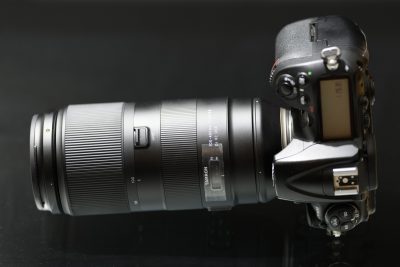Tamron 100-400mm VC review
-
-
Written by Thomas
Quality
Longitudinal Chromatic Aberration and focus shift
Despite its small focal ratio the new Tamron has quite some longitudinal color aberrations (loCA, a.k.a. “axial color” or “bokeh CA”) showing mainly up at the short end as magenta coloration in the foreground. But I did not experience focus shift.
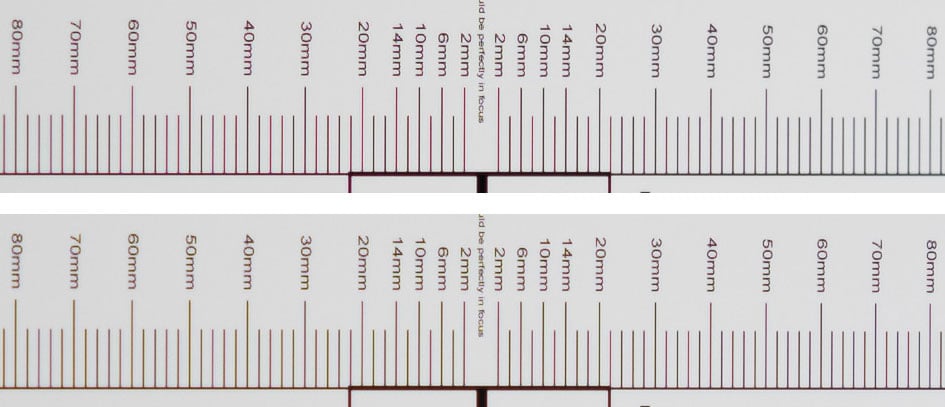
Above: Tamron 100-400/4.5-6.3 VC Longitudinal Chromatic Aberration (loCA). 100% crop, 100mm, 4.5 (top), f8.0 (bottom), left = foreground, right = background
The Sigma shows less coloration:
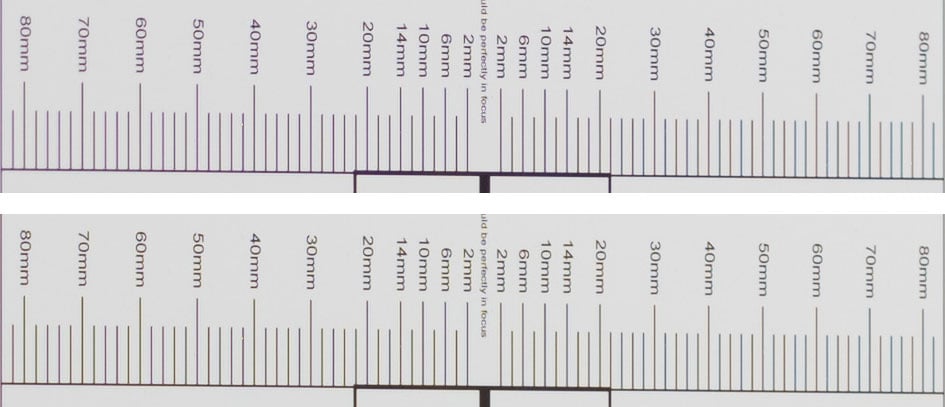
Above: Sigma 100-400/5-6.3 OS Longitudinal Chromatic Aberration (loCA). 100% crop, 100mm, f5.0 (top), f8.0 (bottom), left = foreground, right = background
Sharpness and contrast
Let’s have a look at the theoretical performance of the new Tamron first and compare it to the performance of the Sigma 100-400/5-6.3 OS and the Nikon 80-400/4.5-5.6G VR:
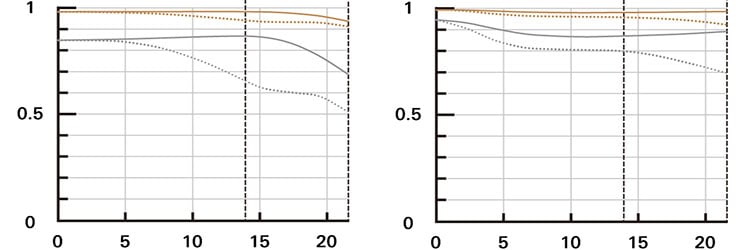
Above: MTF Tamron 100-400/4.5-6.3 VC at 100mm, f4.5 (left) and 400mm, f6.3 (right)
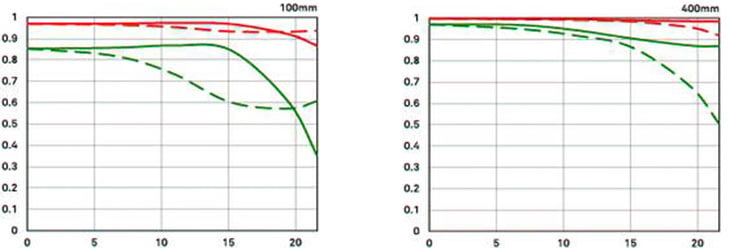
Above: MTF Sigma 100-400/5-6.3 OS at 100mm, f5.0 (left) and 400mm, f6.3 (right)
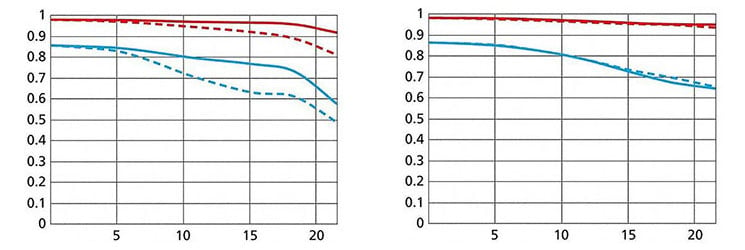
Above: MTF Nikon 80-400/4.5-5.6G VR at 80mm, f4.5 (left) and 400mm, f5.6 (right)
These charts show the lens-performance of both lenses at their largest aperture without influence of diffraction. This is a bit misleading as diffraction at apertures of e.g. f6.3 already robs 10-15% of contrast from the reproduction of finest details. The Nikon 80-400/4.5-5.6G VR is also at a slight disadvantage as its focal ratio at 400mm is 1/3 of a stop brighter. To read these charts you need to know that higher values are better and the closer the line-pairs are together the less astigmatism (= resolution depends on the orientation of the test-pattern) the lens has. The x-axis displays the distance from the optical axis (=center of the sensor) in mm. I’ll show you the real-life performance at 4 mm (center), 13 mm (APS-C/DX-corner), and 20 mm (FF/FX-corner) on a 36MP Nikon D810 body.
From the charts, overall contrast from the new Tamron and its competition (orange/red lines) should be on a very high level and mostly limited by diffraction. The gray/green/petrol 30 lp/mm line(s) indicate some visible astigmatism at the short end even in the corners of the APS-C/DX frame which should mar resolution of fine details. This looks similar to the Sigma, only the Nikon has less. Resolution at 400mm of the new Tamron at the long end is a little below the Sigma in the APS-C/DX image-circle. but still better than from the Nikon. But again: diffraction at f5.6/f6.3 should reduce the visible differences. Let’s see how this theoretical performance translates into real life results in the sharpness test based on Siemens-stars.
What follows are near-center results (first column) followed by APS-C/DX-corner results and FF/FX-corner results on a D850. Processing was done in Lightroom Classic CC 7.1 / CRAW 10.1 from RAW at Camera Standard settings. All shots at ISO 64, noise-reduction is set to 0, sharpening to 50/0.5/36/10, with no extra tone, color, or saturation adjustment.
White-balance was adjusted to a neutral white and I did some exposure compensation to make the brightness of all crops match. So you will not see light fall-off in the corners. Removal of lateral color aberrations is ON, longitudinal CA are not corrected.
The following are all 100% crops!
First up is an overview of the wide-open performance at different focal lengths followed by the performance at f8.0 and f11. You can fast-forward to the comparisons with other lenses by clicking on the crops of the respective focal length.
Tamron 100-400/4.5-6.3 VC; 100% crop from center, APS-C/DX-corner, FF/FX-corner

Above: 100mm, f4.5

Above: 150mm, f5.0

Above: 200mm, f5.6

Above: 300mm, f6.0

Above: 400mm, f6.3
Tamron’s new lens performs very good across its zoom range with excellent sharpness across the full-frame sensor between 150mm and 300mm focal length. At 100mm the FF/FX-corner is just a tad soft but still very good (remember we’re looking here at a 100% crop from a 46MP sensor). Only at 400mm DX and FX-corner of the lens suffer from astigmatism. Still the center performance at 400mm is excellent. If you want to see all the details and comparisons with the competition, read on. Or fast-forward to the performance at long distances.
Performance at f8.0:
Tamron 100-400/4.5-6.3 VC; 100% crop from center, APS-C/DX-corner, FF/FX-corner

Above: 100mm, f8.0

Above: 150mm, f8.0

Above: 200mm, f8.0

Above: 300mm, f8.0

Above: 400mm, f8.0
Performance at f11:
Tamron 100-400/4.5-6.3 VC; 100% crop from center, APS-C/DX-corner, FF/FX-corner

Above: 100mm, f11

Above: 150mm, f11

Above: 200mm, f11

Above: 300mm, f11

Above: 400mm, f11
Stopping down does not improve the corner performance at the long end by much. And up to 300mm the new Tamron is so sharp that you can see the effect of diffraction setting in at f11.
Following is the comparison with the competition at all focal lengths with the aperture wide open. All lenses were shot on the Nikon D850 except for the Sigma 100-400mm which was shot on a Nikon D810 with a somewhat less contrasty test-target. If you want to skip this part, head over to the next section about performance at long distances.
Comparison at 100mm wide open:

Above: Tamron 100-400/4.5-6.3 VC at 100mm, f4.5

Above: Sigma 100-400/5-6.3 OS at 100mm, f5.0, shot on a D810

Above: Nikon 80-400/4.5-5.6G VR at 102mm, f4.8
The Nikon looks the best here closely followed by the new Tamron. The Sigma comes third with a slightly softer center and astigmatism in the FF/FX-corner.
Comparison at 150mm wide open:

Above: Tamron 100-400/4.5-6.3 VC at 150mm, f5.0

Above: Sigma 100-400/5-6.3 OS at 155mm, f5.6

Above: Nikon 80-400/4.5-5.6G VR at 150mm, f5.0

Above: Tamron 150-600/5-6.3 VC G2 at 150mm, f5.0
At 150mm focal length the Tamron 100-400mm and the Nikon are almost indistinguishable while the Sigma is only slightly behind. The Tamron 150-600mm can keep up in the APS-C/DX image-circle but is the softest n the FF/FX-corner.
Comparison at 200mm wide open:

Above: Tamron 100-400/4.5-6.3 VC at 200mm, f5.6

Above: Sigma 100-400/5-6.3 OS at 250mm, f6.0, shot on a D810

Above: Nikon 80-400/4.5-5.6G VR at 200mm, f5.3

Above: Tamron 150-600/5-6.3 VC G2 at 200mm, f5.3
At 200mm focal length the new Tamron 100-400mm is the sharpest of the bunch with the Sigma (at 250mm) and Nikon vying for second place. The Tamron 150-600mm comes last but not by a large margin: its FF/FX-corner is the softest.
Comparison at 300mm wide open:

Above: Tamron 100-400/4.5-6.3 VC at 300mm, f6.0

Above: Sigma 100-400/5-6.3 OS at 250mm, f6.0, shot on a D810

Above: Nikon 80-400/4.5-5.6G VR at 300mm, f5.6

Above: Tamron 150-600/5-6.3 VC G2 at 300mm, f5.6
At 300mm (again Sigma shown at 250mm) the Nikon shows its weakest performance while the other three lenses from Tamron and Sigma perform very similar with the Tamron 100-400mm slightly ahead. So another win for the new Tamron.
Comparison at 400mm wide open:

Above: Tamron 100-400/4.5-6.3 VC at 400mm, f6.3

Above: Sigma 100-400/5-6.3 OS at 400mm, f6.3, shot on a D810

Above: Nikon 80-400/4.5-5.6G VR at 400mm, f5.6

Above: Tamron 150-600/5-6.3 VC G2 at 400mm, f6.0
At 400mm all four lenses become visibly softer especially as you look further out from the center. In the center the new Tamron 100-400mm is the sharpest followed by the Nikon and the Sigma and then the Tamron 150-600mm. Looking in the APS-C/DX-corner and the FF/FX-corner the Sigma comes out ahead with the Nikon also producing a good DX-corner. In the FF/FX-corner the Tamron 150-600mm is 2nd place with both the Nikon and the Tamron 100-400mm being the softest.
Overall Tamron’s new design shows a very good to excellent performance at close range (45x focal length) from 100-300mm and a still very good center at 400mm. This is an astonishing feat on a 46MP sensor for a long zoom with a price tag well below 1000 EUR/USD. Just keep in mind that the focal ratio of the Tamron (and the competition shown here) is only around f5.6 at the long end which is already approaching the diffraction limit of today’s high resolution sensors.
As performance of lenses also depends on the shooting distance.I present another series of test-shots of a city around 1 km away. Processing was done in Lightroom Classic CC 7.1 / CRAW 10.1 from RAW at Adobe Standard settings. Noise-reduction is set to 0, sharpening to 50/0.5/36/10, with no extra tone, or saturation-adjustment. There’s no tinkering with vignette-control so you see it here as it is produced by the lens. I used AF in live view at the largest aperture and did not change focus for other apertures. ISO ranges from 64 at the short end and goes up to 200 at 400mm focal length to minimize any risk of micro-blur even on a very sturdy tripod.
First up is an overview of the wide-open performance at different focal lengths followed by the performance at f8.0 and f11. You can fast-forward to the comparisons with other lenses by clicking on the crops of the respective focal length.
Tamron 100-400/4.5-6.3 VC; 100% crop from center, APS-C/DX-corner, FF/FX-corner

Above: 100mm, f4.5

Above: 150mm, f5.0

Above: 200mm, f5.6

Above: 300mm, f6.0

Above: 400mm, f6.3
The new Tamron repeats its very good performance from the Siemens-star test with a bit softer FF/FX-corner at 100mm and 400mm. There is also a slight glitch at 300mm where the FX-corner is very sharp but the center is not. As I also have shots where the center is sharp(er) and the corner a bit less so it seems that focus was a little off favoring the corner. That indicates some field curvature. If you want to see all the details and comparisons with the competition, read on. Or fast-forward to the rendering of point-light sources at night-shots.
Performance at f8.0:
Tamron 100-400/4.5-6.3 VC; 100% crop from center, APS-C/DX-corner, FF/FX-corner

Above: 100mm, f8.0

Above: 150mm, f8.0

Above: 200mm, f8.0

Above: 300mm, f8.0

Above: 400mm, f8.0
Performance at f11:
Tamron 100-400/4.5-6.3 VC; 100% crop from center, APS-C/DX-corner, FF/FX-corner

Above: 100mm, f11

Above: 150mm, f11

Above: 200mm, f11

Above: 300mm, f11

Above: 400mm, f11
Stopping down does not change the results much except for reducing vignetting at all focal lengths and the effects of the slight mis-focus at 300mm. If you want to see how it compares to the competition, read on. Or fast-forward to the next chapter on rendering of point-light sources at night-shots.
The main image shows the complete scene wide open to give you an impression of the angle of view and to judge vignetting. You can access the respective shots up to f16 via the links beneath the main image. Following the main image are 100% crops from the center, the APS-C/DX-corner and the FF/FX-corner. The Nikon 80-400/4.5-5.6G VR and the Tamron 150-600/5-6.3 VC G2 used for comparison here were shot only a few minutes apart and processed the same. The Sigma 100-400/5-6.3 OS was shot on a D810 at another day with slightly clearer atmospheric condition. That makes the images of the Sigma somewhat more contrasty and the crops a little less magnified. But you still can compare resolution of fine details just as well. As usual I have selected the diagonal that provided the better corner results as almost any lens is a bit decentered.
You can click on each image to access the large original. Please respect our copyright and only use those images for personal use.
Results at 100mm focal length:
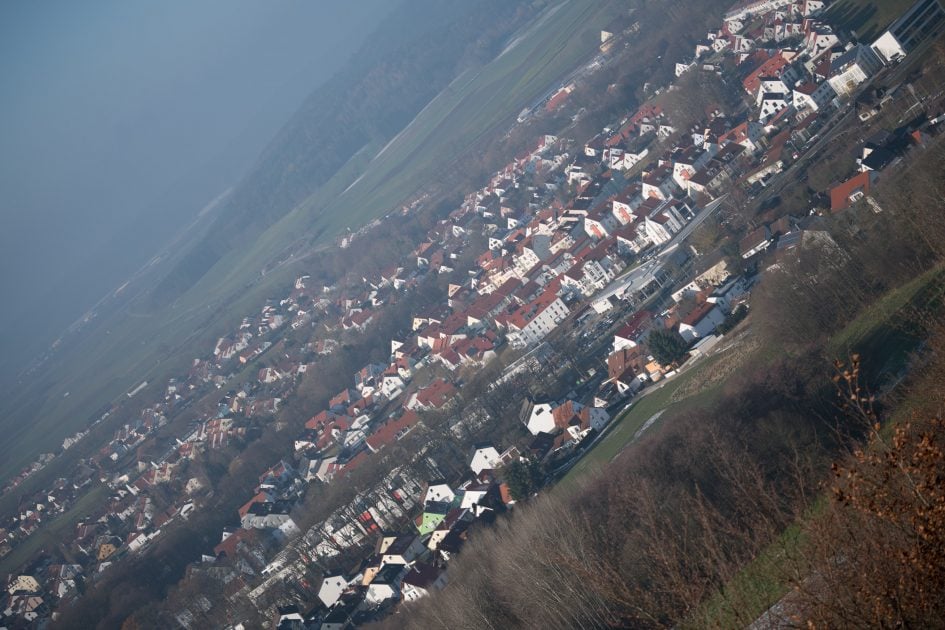
Above: Tamron 100-400/4.5-6.3 VC at 100mm, f4.5; also available at f5.0, f5.6, f8, f11, f16

Above: Tamron 100-400/4.5-6.3 VC at 100mm, f4.5

Above: Sigma 100-400/5-6.3 VC at 100mm, f5.0 on a D810; also available at f5.6, f8.0, f11, f16

Above: Nikon 80-400/4.5-5.6G VR at 102mm, f4.8; also available at f5.6, f8, f11, f16
Results at 150mm:
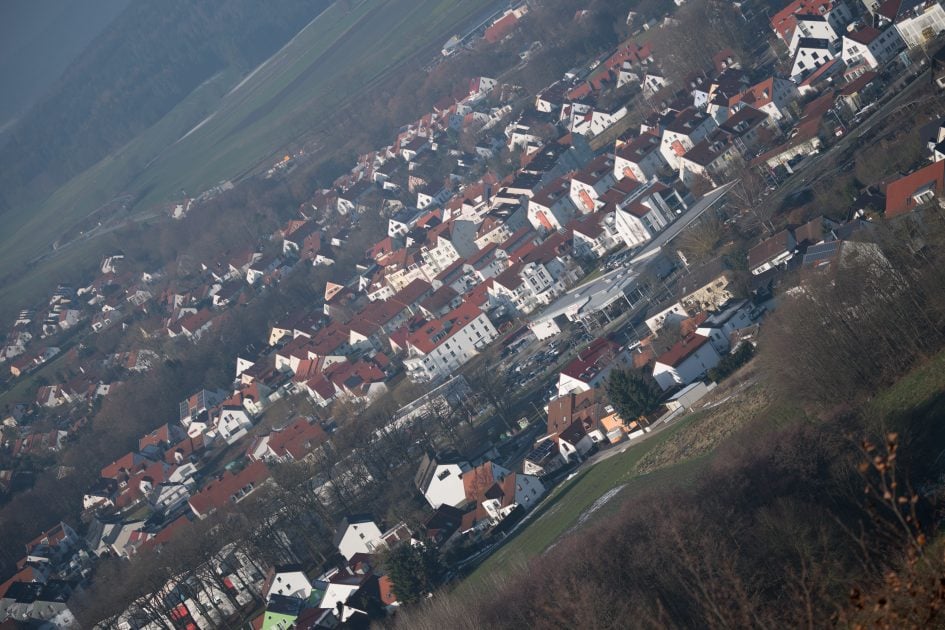
Above: Tamron 100-400/4.5-6.3 VC at 150mm, f5.0; also available at f5.6, f8, f11, f16

Above: Tamron 100-400/4.5-6.3 VC at 150mm, f5.0

Above: Sigma 100-400/5-6.3 OS at 150mm, f5.3 on a D810; also available at f5.6, f8.0, f11, f16

Above: Nikon 80-400/4.5-5.6G VR at 150mm, f5.0; also available at f5.6, f8, f11, f16

Above: Tamron 150-600/5-6.3 VC G2 at 150mm, f5.0; also available at f5.6, f8, f11, f16
Results at 200mm:
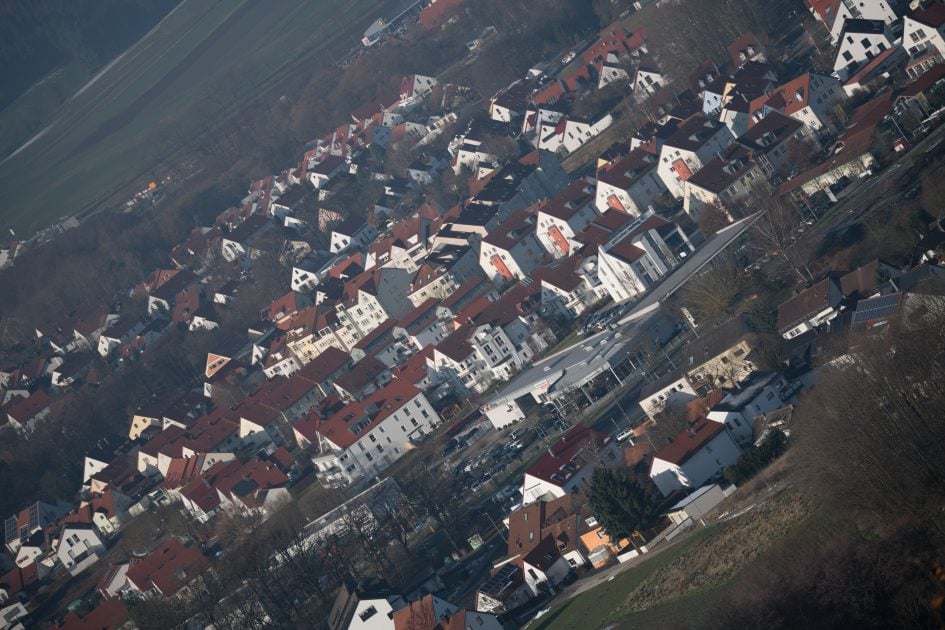
Above: Tamron 100-400/4.5-6.3 VC at 200mm, f5.6; also available at f8, f11, f16

Above: Tamron 100-400/4.5-6.3 VC at 200mm, f5.6

Above: Sigma 100-400/5-6.3 OS at 200mm, f5.6 on a D810; also available at f8.0, f11, f16

Above: Nikon 80-400/4.5-5.6G VR at 200mm, f5.3; also available at f5.6, f8, f11, f16

Above: Tamron 150-600/5-6.3 VC G2 at 200mm, f5.3; also available at f5.6, f8, f11, f16
Results at 300mm:
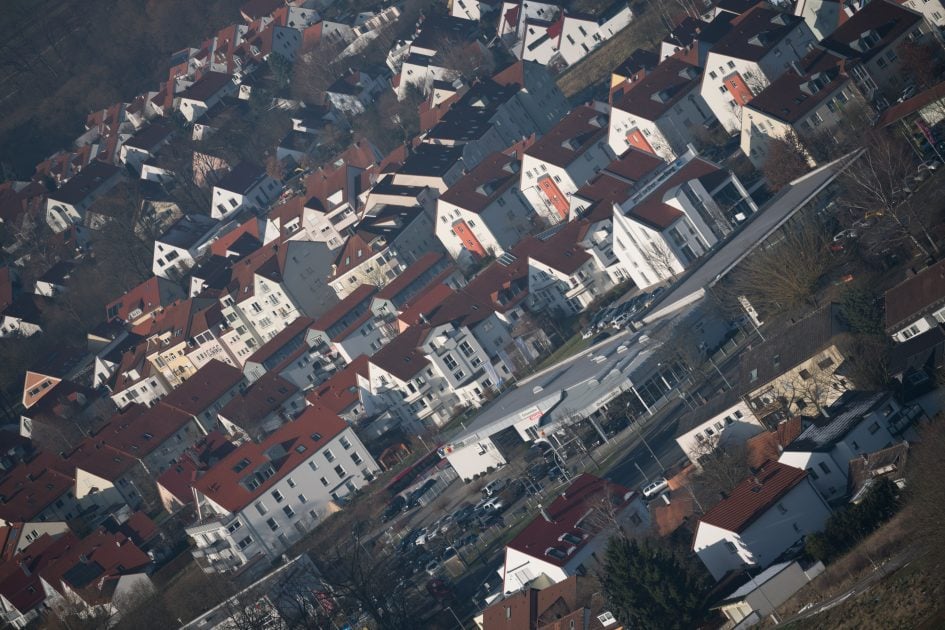
Above: Tamron 100-400/4.5-6.3 VC at 300mm, f6.0; also available at f8, f11, f16

Above: Tamron 100-400/4.5-6.3 VC at 300mm, f6.0

Above: Sigma 100-400/5-6.3 OS at 290mm, f6.0 on a D810; also available at f8.0, f11, f16

Above: Nikon 80-400/4.5-5.6G VR at 310mm, f5.6; also available at f8, f11, f16

Above: Tamron 150-600/5-6.3 VC G2 at 300mm, f5.6; also available at f8, f11, f16
Results at 400mm:
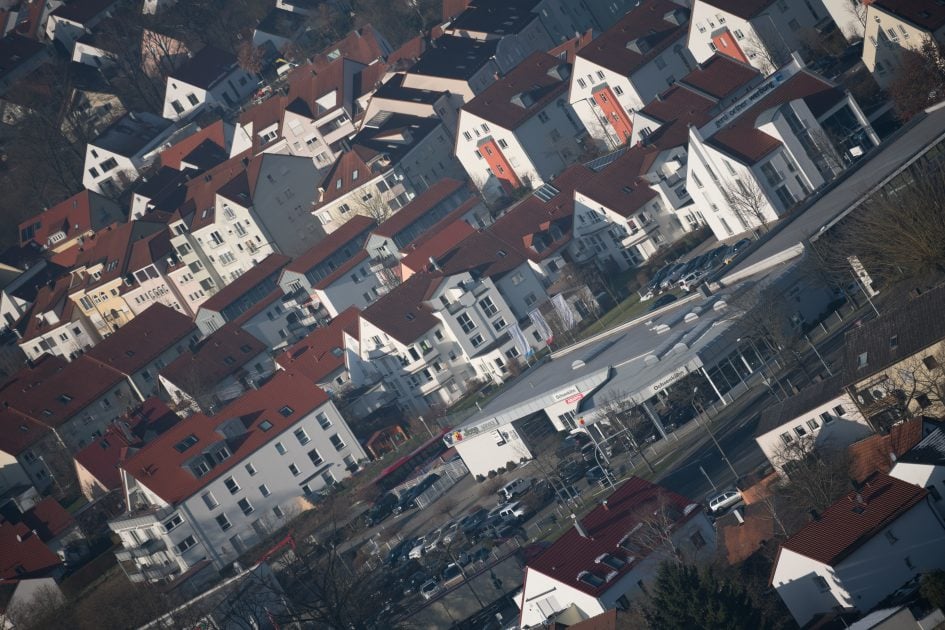
Above: Tamron 100-400/4.5-6.3 VC at 400mm, f6.3; also available at f8, f11, f16

Above: Tamron 100-400/4.5-6.3 VC at 400mm, f6.3

Above: Sigma 100-400/5-6.3 OS at 400mm, f6.3 on a D810; also available at f8.0, f11, f16

Above: Nikon 80-400/4.5-5.6G VR at 400mm, f5.6; also available at f8, f11, f16

Above: Tamron 150-600/5-6.3 VC G2 at 400mm, f6.0; also available at f8, f11, f16
Again, the new Tamron looks pretty good compared to its competition except for the center at 300mm which suffers a bit from mis-focus in my test-shot.
Rendering of point-light sources at night-shots
Night-shots pose a different challenge for lenses as the contrast is even higher than under bright sun and point-light sources can reveal some weaknesses such as coma, haloing and color-aberrations that do not show up as prominently in other test-shots. The 100% crops below the main image show the effect of coma in the FF/FX-corner of the new Tamron at 100mm focal length and various apertures:
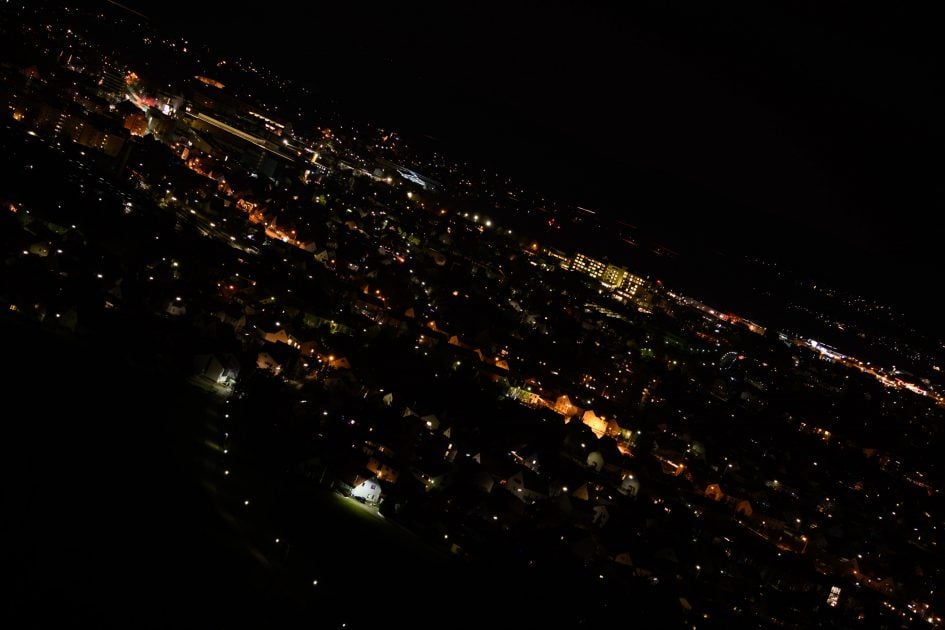
Above: Tamron 100-400/4.5-6.3 VC at 100mm, f4.5; also available at f5.6, f8.0

Above: Tamron 100-400/4.5-6.3 VC at 100mm; FF/FX-corner at f4.5 (left), f5.6 (middle), f8.0 (right)
The new Tamron has no coma to speak of, just like the competition.
Rendering of out-of-focus point-light sources
This test is for the rendering of point-light sources in an out-of-focus background. The circle of confusion that is produced by this test is pretty indicative of Bokeh performance (in the background) and light fall-off. Ideally the out-of-focus image of the point-light is evenly lit and perfectly circular, with no “onion-rings”, and without coloration. Large aperture lenses normally produce an effect known as “cat’s eye” the further away from the optical axis the point-light is projected. This is due to optical vignetting in the lens barrel when light enters the lens from an angle.

Above: Tamron 100-400/4.5-6.3 VC at 400mm, f6.3; also available at f8.0

Above: Tamron 100-400/4.5-6.3 VC at 400mm, f6.3; 44% crops from center, APS-C/DX-corner, FF/FX-corner
The crops above show: The Tamron 100-400/4.5-6.3 VC produces soft but not very large Bokeh balls with only a weak outline. There are no onion rings as the lens has no aspherical elements and there is no clipping from the mirror-box.
Now let’s see how this analysis of out-of-focus point-light sources translates into Bokeh-performance shooting a book-shelf. As I couldn’t get away farther from the shelf I used a focal length of 145mm to make this shot comparable to my other reviews.
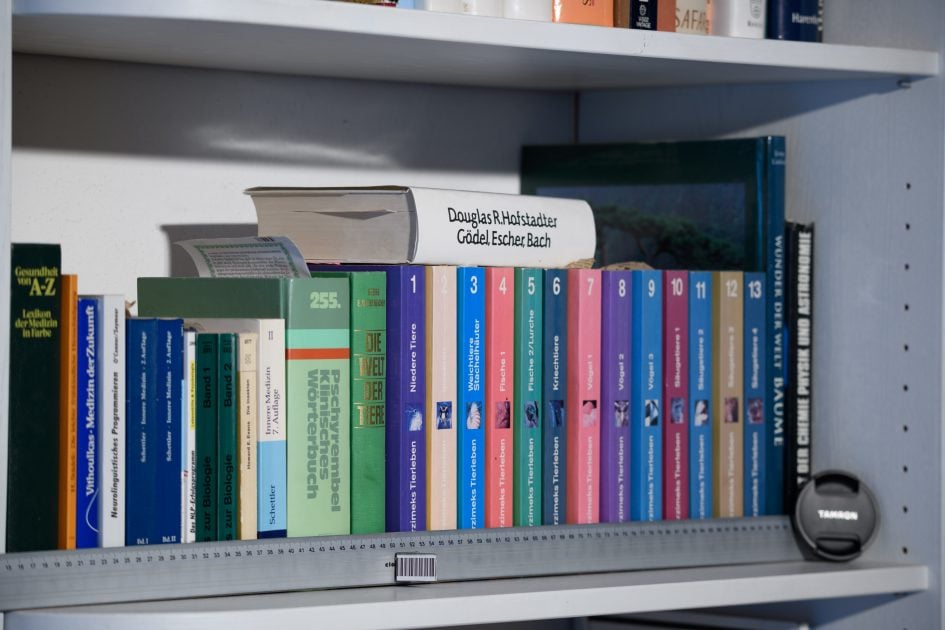
Above: Tamron 100-400/4.5-6.3 VC at 145mm, f5.0; also available at f8.0

Above: Tamron 100-400/4.5-6.3 VC at 145mm, f5.0; 44% crops from foreground, middle-ground, background
As is to be expected at a focal ratio of f5.0 the Tamron does not show a strong blurring in the fore- or background. But at least the transition is smooth and with only little coloration and the background does not look very nervous.
Flare/ghosting, and sun-stars
A strong light-source shining directly into the lens could produce strange colorful ghosts-images or reduce contrast considerably through flare and glare. The appearance of flare and ghosting depends on factors like the aperture, the focal length, and the angle of the light hitting the lens. So to judge the proclivity of the Tamron for these artifacts I went through a series of 30 well calculated shots against a strong light source to provoke flare, glare, and ghosting.
Below you can see some of the more spectacular effects at 100mm focal length with the light inside the image circle near the center (see left image below) and some surprising glare where the light is well outside the image circle but still shining into the lens (right image below).
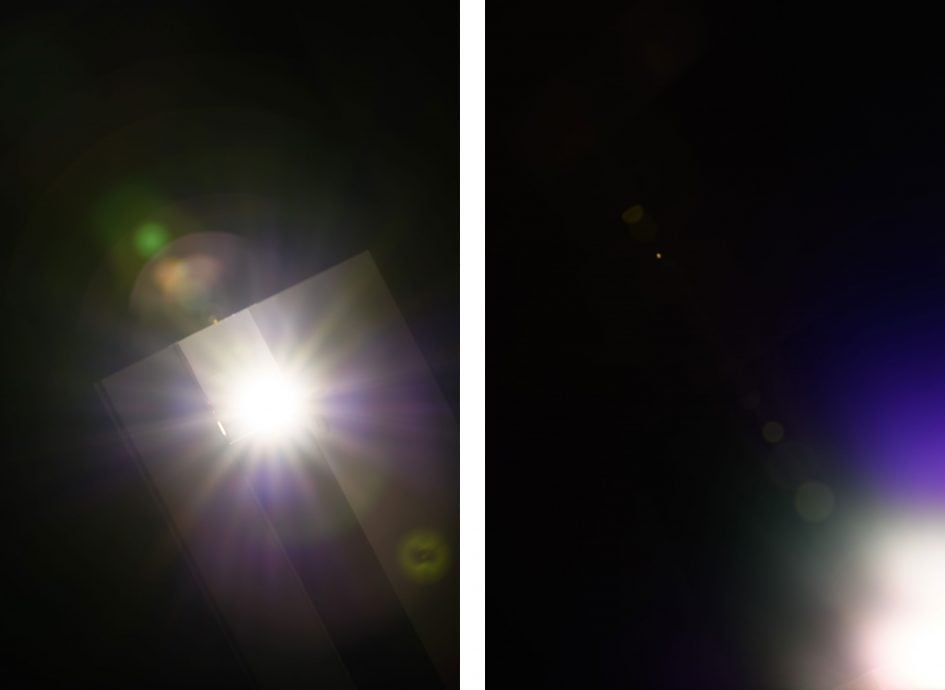
Above: Flare and ghosting. Strong light hitting the Tamron 100-400/4.5-6.3 VC at 100mm, f8.0
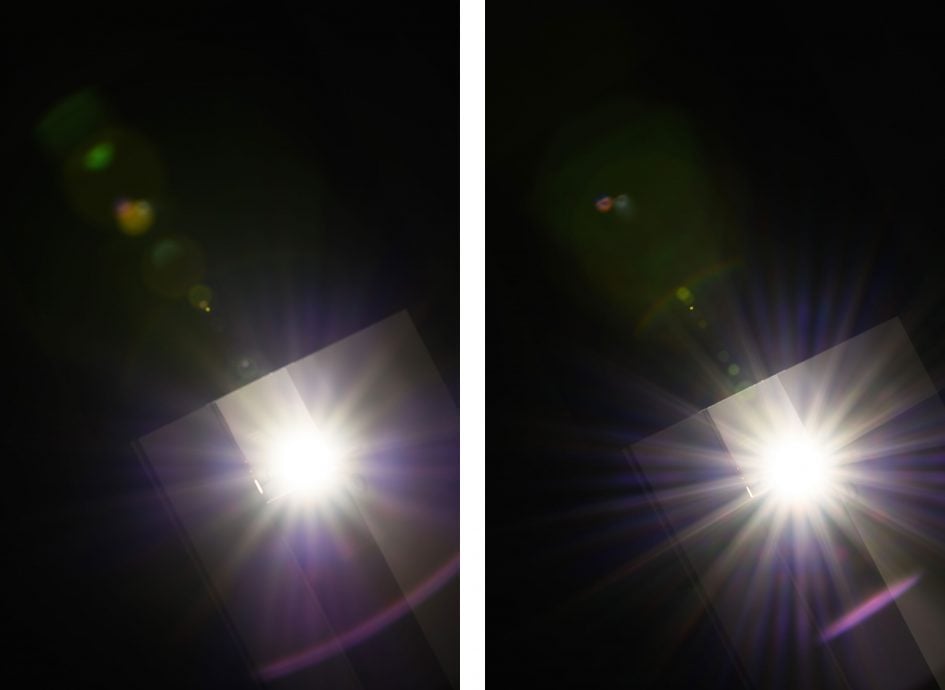
Above: Flare and ghosting. Strong light hitting the Tamron 100-400/4.5-6.3 VC at 100mm, f8.0 (left) and f16 (right)
Sunstars are only well defined at short focal lengths and when the lens is stopped down beyond f8. When the light was further outside the frame (but still shining into the lens) there was almost no flare, glare or ghosting.
At longer focal length you should make sure that strong light-sources are well outside the image circle as they can considerably lower the overall contrast.
Next check out my sample images!
Check prices on the Tamron 100-400mm VC at Amazon, B&H, Adorama, or Wex. Alternatively get yourself a copy of my In Camera book or treat me to a coffee! Thanks!



